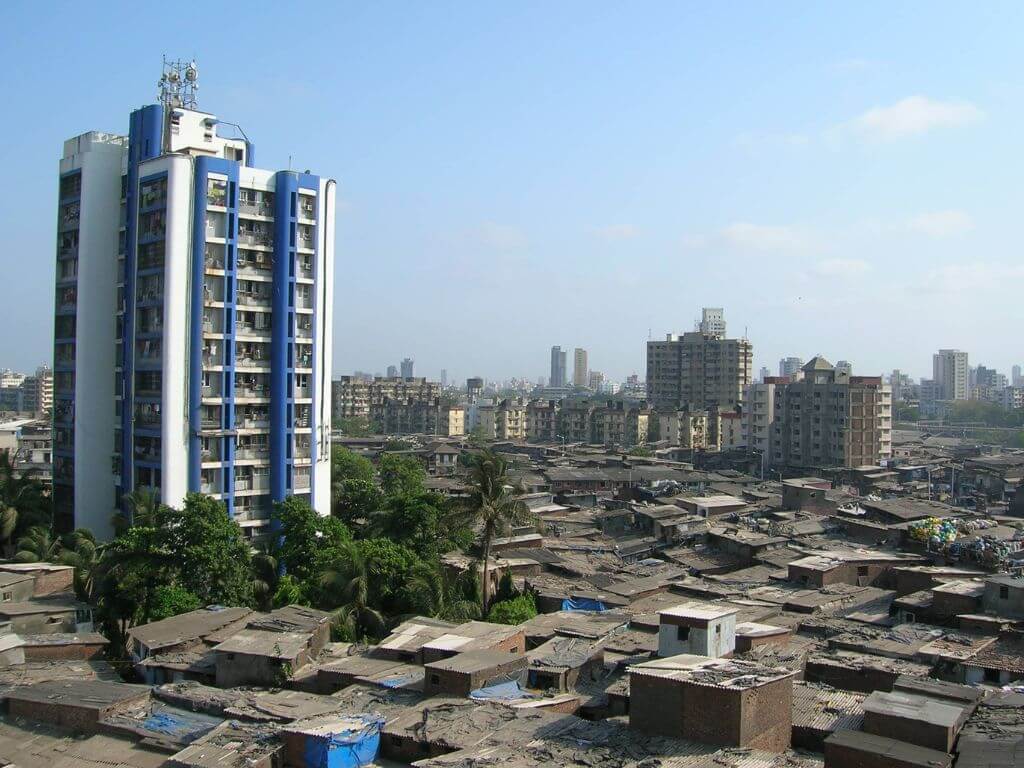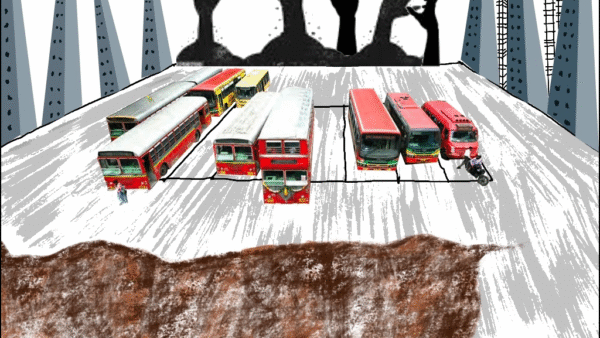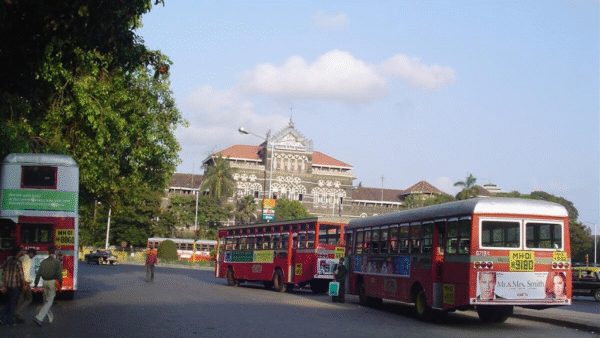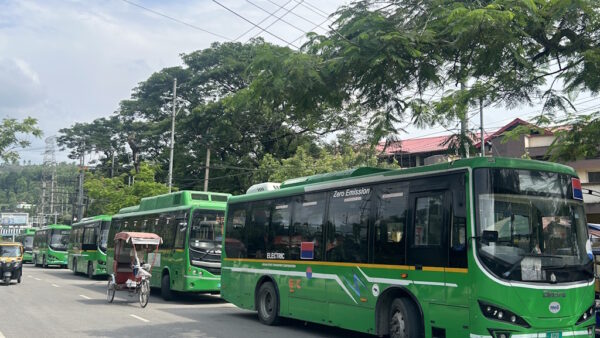We suggested that all the land on which slums stand is reserved in Mumbai’s Development Plan (DP) for affordable housing and the incentive Floor Space Index given to builders undertaking slum redevelopment is restricted to constructing houses ranging from 200 square feet to 750 square feet rather than large luxury apartments. It would then be possible to build more than four lakh affordable housing units, besides rehabilitation houses for existing slum dwellers, which could be offered on ownership and rental basis for the poor and middle classes.
If the land owned by the Maharashtra Housing and Area Development Authority (MHADA) was also roped in for this purpose – and it is among the largest landowners in the city – then the number of affordable houses that could be built could increase to even nine lakh units. Given that the shortfall in this low and middle-income segment is 7.9 lakh units, estimated by the state government and referred to in the draft DP report, constructing affordable houses on land occupied by slums and MHADA can very well take care of this deficit.
We believe that a large part of the demand for affordable housing will be from people living as tenants or those registered in slums after the year 2000, which means they will not be eligible for rehabilitation in the government’s Slum Rehabilitation Authority (SRA) model. Also, there is an internal growth in demand as families require separate or independent houses. Utilising the slum land for making affordable houses will take care of this demand too.
Slum population profile
The total slum population, according to Census 2011, was 6.53 million. Some slums have been redeveloped or have been considered as special planning areas as in the case of Dharavi. Therefore, the balance population for rehabilitation would be 4.67 million as seen in the table below.
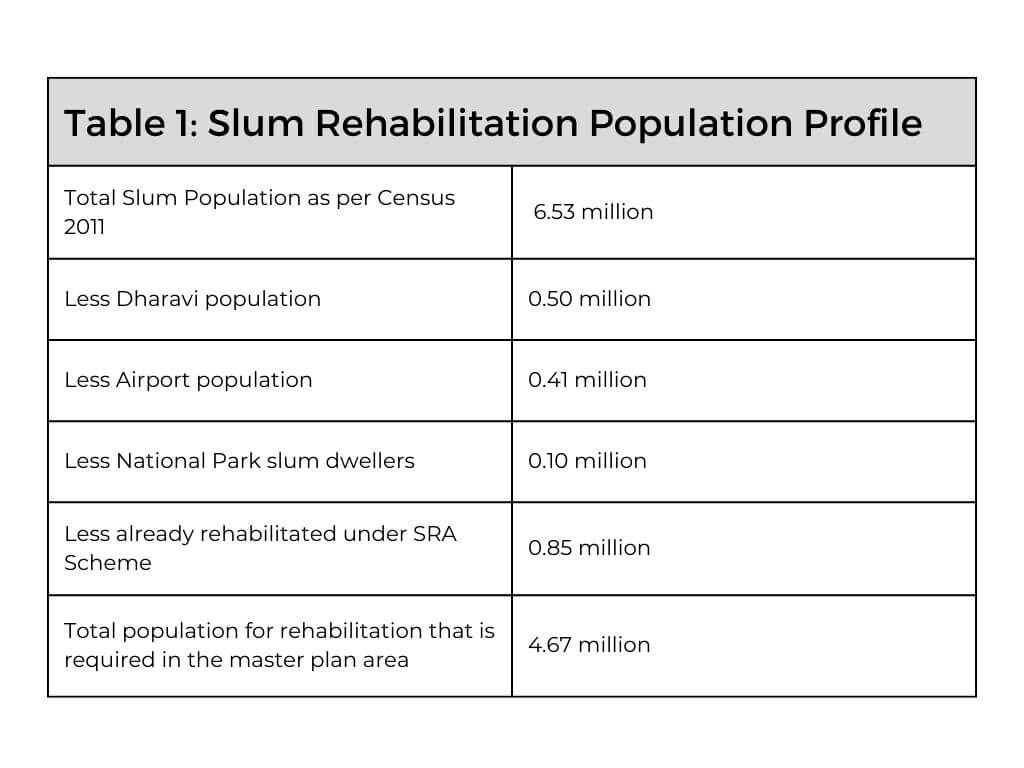
There are some slums on private land too. However, in such cases, the incentive FSI which the government offers along with a host of other rewards to landowners and developers, would accrue to them only after they pledge the ownership of land to the state government. It is worth remembering that besides such goodies and incentive FSI, the government also commits a huge investment towards services and infrastructure requirements of these projects. We suggest, therefore, that the government has every right to impose redevelopment conditions on these projects in the interest of their fullest potential.
This creation of affordable housing through slum redevelopment will not only check locational displacement of large sections of people in Mumbai but, importantly, it will also enable the integration of affordable housing and marginalised people with various neighbourhoods and the city. This is an extremely important socio-political consideration in the planning and development of Mumbai.
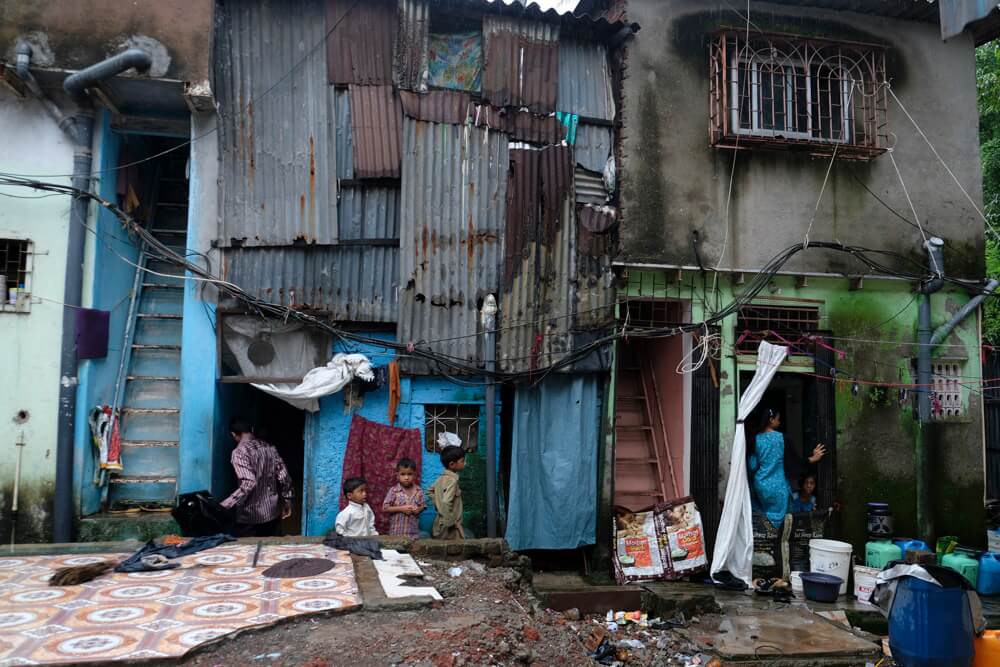
Reserve land in the Development Plan
Nivara Hakk Sangharsh Samiti and architects PK Das & Associates undertook a mapping of slums in 2011 and prepared a comprehensive development plan for the entire tenable slum land measuring approximately 2,600 hectares along with a set of development principles, guidelines and objectives. This plan was submitted to the DP authorities and the state government, including successive chief ministers and senior bureaucrats.
Under this plan, it would be possible to construct over four lakh affordable housing units, thus contributing to building a sustainable city with a higher quality of life and environment. The DP should consider that under this plan it will be possible to utilise FSI 3 (Nivara Hakk opposes increasing the FSI for slum redevelopment beyond 3 as demanded by builders and developers from time-to-time), limit density to a maximum of 550 persons per hectare (current average density of Middle Income Group and High Income Group housing is 450 per hectare and likely to go up with increased FSI of 4 as demanded for various schemes), provide open spaces, amenities and infrastructure as per town planning norms, and clear up encroachments on reservations for roads, amenities, open spaces, and so on.
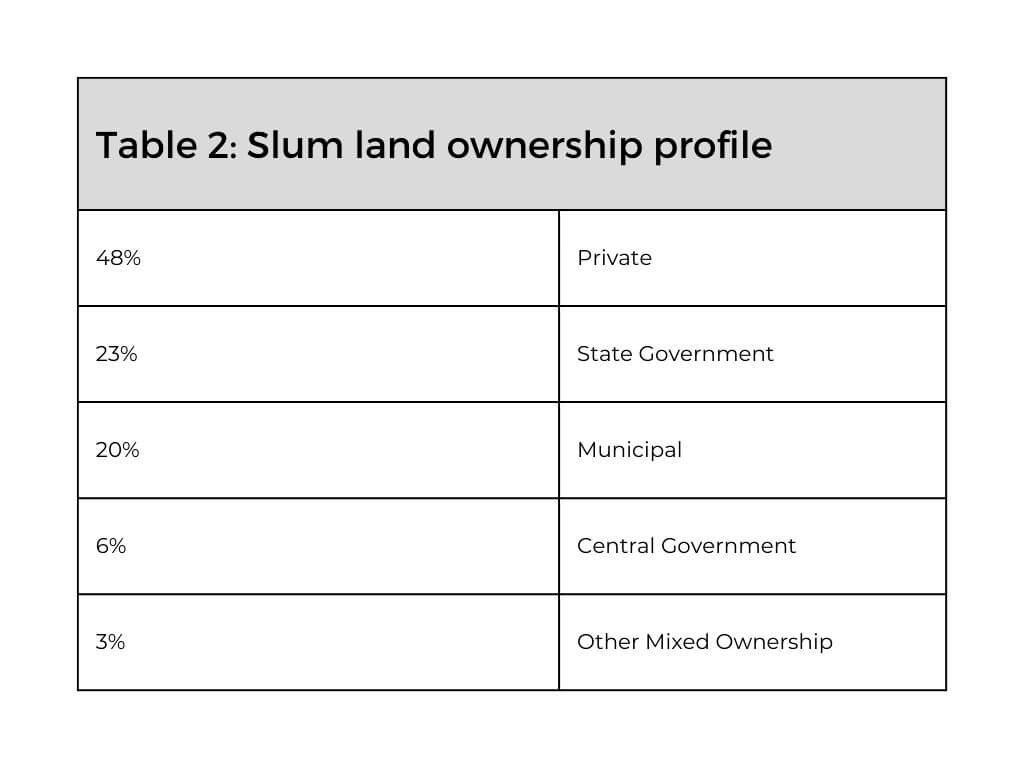
Accordingly, Nivara Hakk demanded that the state government undertake a detailed survey of all slums including their various land ownership profiles and areas. It also demanded that a comprehensive master plan covering the entire slum land be prepared based on which individual slum redevelopment buildings can then be permitted.
For this purpose, the Development Plan and the Development Control Rules (DCR) set out development conditions to achieve adequate affordable housing. Also, it is necessary for the government to undertake – through the SRA – a comprehensive and integrated planning of all slum land and not consider them as individual sites as is currently being done. The present system of individual site consideration is leading to further ‘slumification’ of Mumbai – high-rise buildings packed closely together with densities going up to 1,000-1,300 tenements per hectare and, therefore, lacking light, air and privacy for the slum dwellers who are resettled in them.
Therefore, we suggested the DP-2034, which was being prepared then, must reserve slum land for affordable housing and frame detailed guidelines in the DCR relating to FSI, density, open spaces and amenities. The SRA must thereafter adhere to these guidelines and not offer concessions under the guise of making projects viable, which only undermine the essence and spirit of the city’s larger development interest.
The draft DP proposed to develop affordable housing by taking the cost of land out of the equation through the deployment of land instruments but it did not suggest how this would be done. Using land as a resource is relevant in the current hopeless situation where lack of production and unavailability of affordable housing for the poor and the middle class has led to the proliferation of slums and deteriorating quality of life for all in the city.
This is also significant because merely reserving land as ‘H’ for Housing as in the DP-1991 is not enough. The experience on the ground shows that such reserved land has been developed largely for high-cost housing with the land cost constituting 70 to 75 percent of the property value. The high price of land made affordable housing impossible and impractical. The city was thus deprived of affordable housing when it most needed it.
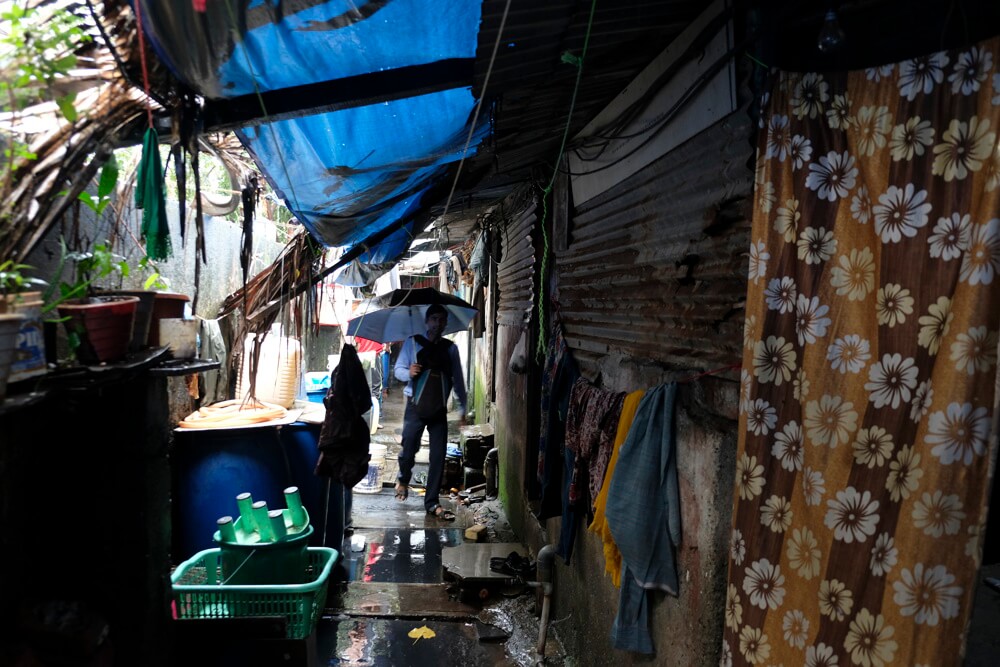
Development Control Rules matter too
In this regard, we prepared a detailed plan covering the entire slum land on which construction was possible, and we also prepared a set of principles, guiding factors and objectives which would enable the construction of affordable houses.
Framing detailed guidelines in the DCR with regard to FSI, density, open spaces and amenities, among other points, is important because successive governments have introduced new schemes merely through the DCR, modifying it time and again, as the preferred method of regulating development. Mumbai has thus been expanding without comprehensive planning or a set of guidelines enforced.
This phenomenon is clearly seen in most slum redevelopment projects implemented under the SRA model. The absence of planning has led to skewed development and peculiar short-term demands – for example, the demand for increasing FSI – which are often short-sighted and counter-productive. Some fallouts of this haphazard and skewed development have been:
- Cheek-by-jowl buildings
- 20 to 25+ floors for Economically Weaker Sections
- No amenities
- No open spaces
- Undesirable density
- Further ‘slumification’ of living conditions
- Causing congestion trauma
- Defacing the city landscape
What can be done
Moving forward, the key steps to a solution to the housing problem are:
First, the government must reserve adequate land in the Development Plan in proportion to affordable housing demand. This land is not reserved for housing but for affordable housing. Then, the government must initiate slum redevelopment with the intention of building affordable houses complete with amenities.
Third, there should be an integrated master planning of all land occupied by slums, a Slum Land Master Plan, which would be better than to consider each individual slum for redevelopment.
Fourth, the government must promote the affordable housing stock by restricting sales unit areas and regulating prices, as per provisions already available in the MHADA Act. Fifth, till such time that this redevelopment does not happen, the government must undertake slum improvement programmes including the provision of drinking water, toilets, drainage and amenities.
Lastly, the government must utilise the MHADA land and other vacant land belonging to other state government agencies for developing affordable housing and amenities.
Mumbai’s slum map
In 2011, we took on the exercise of mapping the slum land of Mumbai using Google Earth images along with data from the Brihanmumbai Municipal Corporation (BMC), SRA and other agencies with the objective of preparing a comprehensive and all-inclusive Slum Redevelopment Master Plan in which various land use reservations on slums land as per the DP were identified. The findings were:
• The total area on which slums were located is 38.78 square kilometres 3,878 hectares.
• This is 8.75 percent of the total area of Mumbai of 482.74 square kilometres and 17.29 percent of the total tenable land area of 244.50 square kilometres.
• The total slum population was 6.53 million as per Census 2011 and the average slum density was 300.05 tenements per hectare.
This plan helped to re-envision Mumbai with an integrated slums redevelopment and affordable housing alternative. Shortage of land for affordable housing can be addressed by reserving all slum occupied land for affordable housing. It is necessary to undertake the preparation of a comprehensive master plan for slum redevelopment and affordable housing, based on town planning principles. Similarly, this master plan should be prepared based on the planning in each ward. An increased government role in planning, project management, administration, finance along with price control is inevitable. The ‘Mumbai’s Slum Map’ was the starting point of such an endeavour.
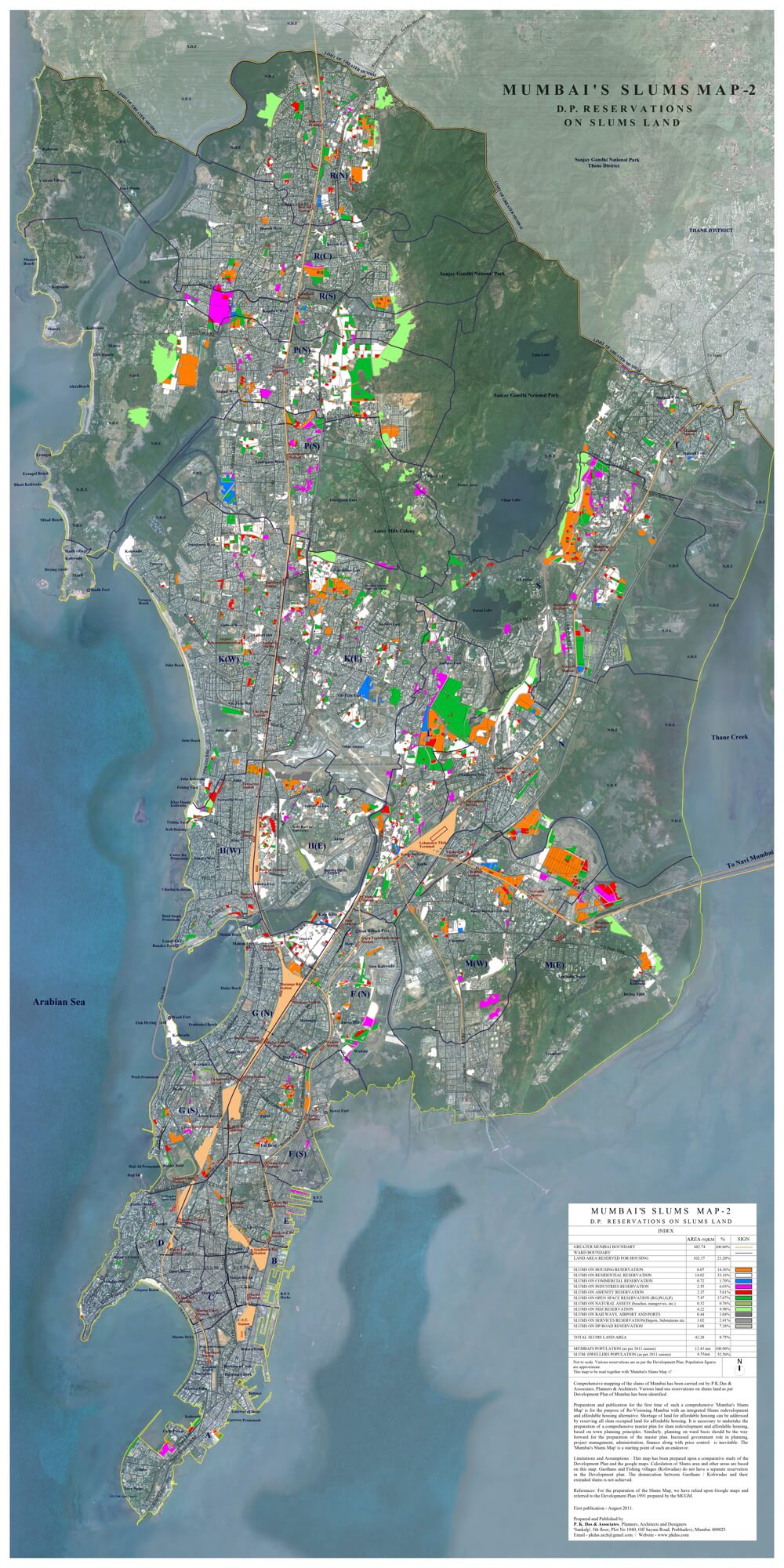
In this slums map, we have identified various DP reservations which have been imposed on existing slums. Such a process of planning which fails to recognise and map the existing slums, promotes forced displacement thereby imposing a huge burden on slum dwellers and the city. We suggested that the DP should accept the existing land occupation pattern and propose redevelopment accordingly.
To calculate tenable land, we deducted the area of the following reservations:
1. Open spaces – 7.47 square kilometres
2. Natural assets – 0.32 square kilometres
3. DP Road Reservations – 3.08 square kilometres
Therefore, the buildable land will be reduced from 38.78 square kilometres or 3,878 hectares to 27.91 square kilometres or 2,791 hectares.
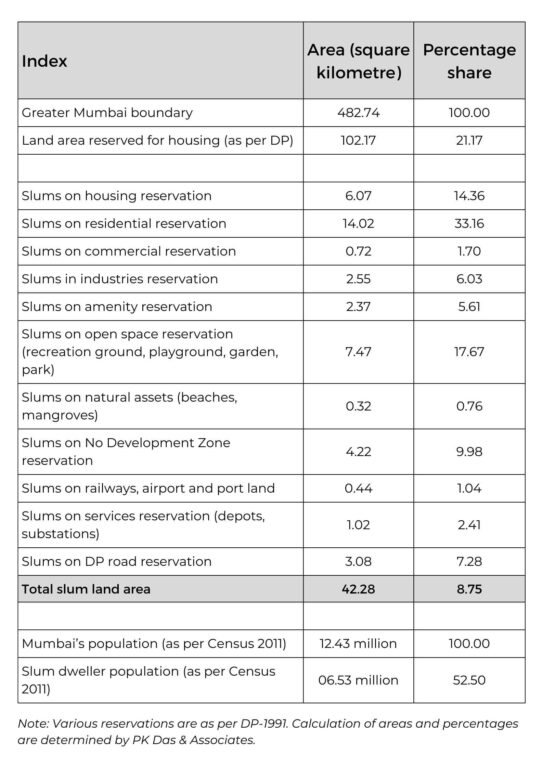
These are lightly edited excerpts from the publication Chasing the Affordable Dream: A Plan to House Mumbai’s Millions by the authors. PK Das is a well-regarded architect-activist involved in the housing issue for more than three decades who along with Gurbir Singh, senior journalist and Consulting Editor for The New Indian Express, and others co-founded the Nivara Hakk Sangharsh Samiti; Ritu Dewan is the founder-member of the first Centre of Gender Economics; Kabir Agarwal is is an independent journalist who writes on public policy, the economy, climate change, energy and national security.
Photos: PK Das & Associates

